Budget
Island of the Fishmen aka L'isola degli uomini pesce
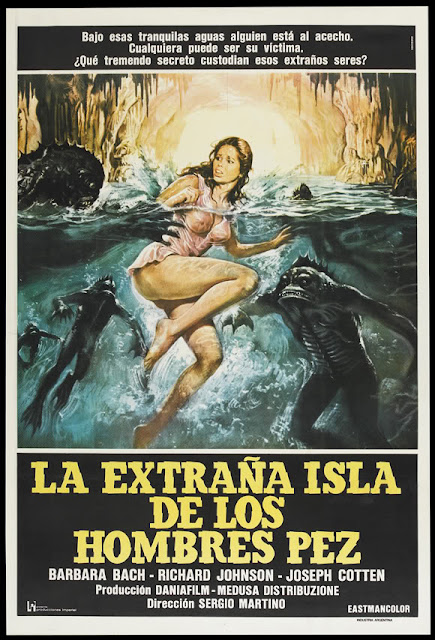
Well, it’s been a while since I wrote (or watched, for that matter) anything as gloriously silly as Island of the Fishmen. Whilst I have seen it before, it was only once and somewhat over a year ago, so I thought this re-imagining of Dr Moreau’s isalnd was ripe for another watch. And what a (ahem) treat it is!
It opens as you might expect a tense serious monster film to: the sea is still, several injured men look silently at the camera and a gull screeches overhead. Something has gone very wrong here, but we just don’t know what! Maybe this will be, despite the name, a slow-building tense affair, all hinted-at flashes and unsettling curiosities….. OH WAIT, NO! MONSTERS HAVE ARRIVED!
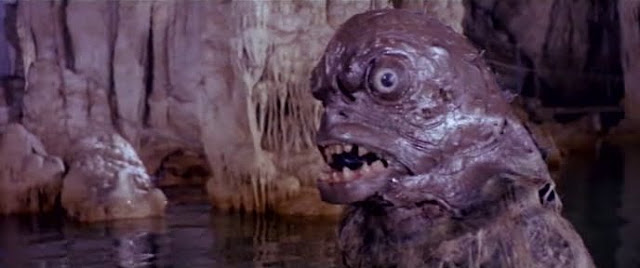
The boat rocks, the men shout and scream, despite clearly being in a studio rather than the ocean they are plunged into the sea! We see flashes of fishy monster hands and eyes… and all this in the first five minutes.
The greatest thing about this film is that, unlike many of its ilk, it never really slows down. All too often, I’ve watched dull films with snappy titles, fun beginnings and then a tedious 45 minute crawl towards a decent finale, the kind of film that makes 90 minutes seem like a very long time indeed. Thankfully, Island… is not one of these. The pace does dip and wobble but the sense of threat and excitement never really leaves. Even within the first half hour or so most of the first characters meet grisly fates (more fishmen!) , presumably-poisonous snakes have threatened the others and native islanders have attacked and captured our heroes. Through all this carnage walks the impressive mustachioed badguy, Rackham (Richard Johnson), sneering and snarling his lines at his captive would-be wife and our shipwrecked hero.
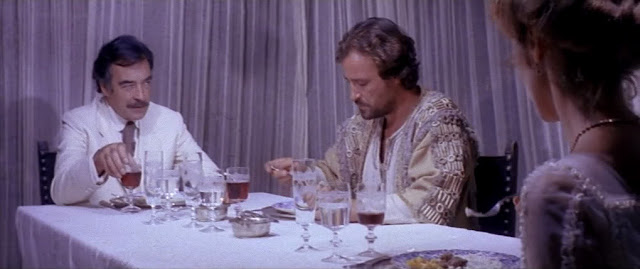
From here on in it just gets sillier. We learn about the rediscovery of Atlantis, the origin of the savage clawed fishmen and the dastardly Rackham’s true plans. It’s chaotically silly stuff that makes little sense to anyone but it romps on through with gleeful abandon. And it is great fun.
I don’t want to give too much of the fabulous plot away but I couldn’t help but mention the volcano shots… Every now and then the camera cuts to some very impressively shot footage of erupting volcanoes - obviously lifted from a nature documentary - which, when contrasted with the unspeakably silly Fishmen costumes, makes them look even more ridiculous than they otherwise would have done.
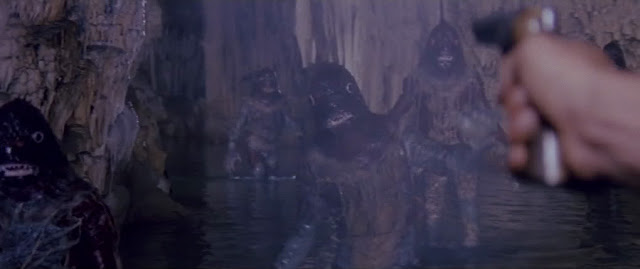
N.B. This was re-cut and re-released in the US as Screamers. I’m not really sure in what ways that version was different, as I watched the Italian print, but I do know that Roger Corman re-shot the intro to add more gore… The poster for Screamers bears almost no relation to what happens in the Island of the Fishmen!
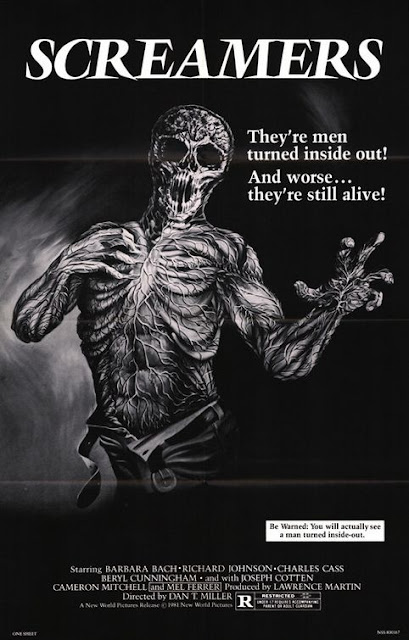
Angel Blade

The last thing I posted here (see below) was a rant/argument about how the “b” in “b-movie” didn’t mean bad. Sadly, as is so often the way when you try to make an argument, the next thing to come along so totally undermined my point that I’d have quite happily pretended it didn’t exist. But I shan’t, if only because admitting that there are exceptions to any argument is a good thing to do.
That next thing that came along was Angel Blade.
[WARNING! SPOILER ALERT! THIS REVIEW REVEALS THE PLOT OF THE FILM]
Now, I’ll be straight about this from the beginning; I bought Angel Blade on DVD for £0.99 at the nearest er… 99p shop. So I’ll admit that I wasn’t necessarily expecting a masterpiece (although I did pick up a couple of Dario Argento films there too… Wine some, lose some). And masterpiece it most certainly wasn’t.
I would have no hesitation in naming Angel Blade as one of the worst films I have watched in recent memory.
The creative ’team’ doesn’t exactly bode well. From the “Deavid Heavener Entertainment Group” comes a film that is written by David Heavener, produced by David Heavener, directed by David Heavener and starring David Heavener. The guy has taken the role of the auteur to a higher degree. You feel it was only really physical impossibility that stopped him giving himself all the other parts in the film. Oh yeah, and the fact that his (and only his) numerous sex-scenes wouldn’t have been as fun for him to write/direct/star in if there wasn’t anyone else around…

I’m getting ahead of myself though. I’ll go back to the premise of the film. A mysterious killer is murdering prostitutes in LA. So far so good. Anyone who’s seen Franco’s New York Ripper or indeed pretty much anything made in Italy between 1960 and 1980 can tell you that this is a fine starting point for a film. It guarrantees you a good dose of sleeze, gore, intrigue and action. Perfect. Who could mess this one up?
David Heavener, that’s who.

By null at 2010-03-30
The plot manages to be both confusing and dull, the sex scenes bear very little relation to the film - more like sexual interludes than actual scenes - and the ‘astonishing’ secret of the film is laughable. (Oh yes, here come the spoilers…) Not content with merely being writer/producer/director/lead policeman character, David Heavener’s character is also the psycho killer. His reasons? Just wait and see… (drumroll) The reason that David Heavener, once-good cop, has gone on a pregnant-prostitute killing rampage in LA is because… his pregnant girlfriend/wife walked off a roof and died.
Yes.
I’ll write that again. The reason that David Heavener, once-good cop, has gone on a pregnant-prostitute killing rampage in LA is because… his pregnant girlfriend/wife walked off a roof and died. It wasn’t that she was killed in the line of duty. It wasn’t that she was even killed at all. She was looking through the viewfinder of her camera and, in perhaps the most implausible moment in cinema history, she walked. off. the. roof. of. a. building. Splat.
Oh dear.
If however, all this gives the impression that I didn’t enjoy this film, you’re very much mistaken. Cinematic genius apart, Angel Blade is a stunning example of just how badly you can tell a nonsense story and, as such, is totally worth a watch! I might leave it a while until a second viewing though…

The 'B' in B-Movie Doesn't Mean Bad: A Rant.
As you can probably tell from just the briefest glance at this blog, I watch a lot of what would commonly be called ‘bad films’. Before we go any further, it should be made clear that this is a misleading and unfair label for these films. Films today tend to break down into depressingly few categories. They are either Big Budget, Independent, ‘Art-house’ or Foreign. Anything else tends to get labelled as bad. What’s even more disappointing is that, in the vast majority of cases ‘independent’, ‘art-house’ and ‘foreign’ often run together. So we’re left with: Big-Budget-Small-Brain-Blockbusters (the kind you eat popcorn with), Arty/Weird/Intellectual/Foreign/Independent (the kind you sip red wine with) and ‘the rest’ (the kind you drink lots of beer with).
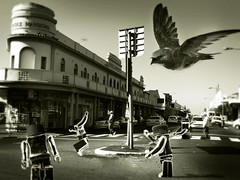
robot intersection dance; zombie attack-bird!
Originally uploaded by ٭betenoir٭
This ‘the rest’ category has a bad image nowadays. Once-upon-a-time, in the days of the b-movie, these films were important. They didn’t have the cash of the Hollywood hits, nor the intellectual/pretentious (delete as appropriate) element of the indie/arty/weird/foreign film. No. They were made on tight budgets, with tight time-limits and tight resources. They were made to be enjoyed. This is pulp cinema. Nowadays we associate the term ‘b-movie’ and perhaps even ‘pulp’ with ‘bad’. This is simply not (necessarily) the case.
Compare film to literature. Again, we find the blockbusters (your Dan Browns etc), an appreciation for ‘classics’, an appreciation for the experimental/philosophical/foreign/intellectual but you also find an considerable about (albeit way less than there used to be) of pulp literature. Whilst you might very well want to label Dan Brown as pulp (and are probably correct…), there is a difference. By pulp I’m talking about the books that are churned out at an astonishing rate. The detective stories and murder mysteries that fill shelves in bookshops and libraries and lie discarded on trains, benches and café tables.

These are not high-art. Nevertheless, they are also – to put it simply – not bad. The most essential thing whilst writing genre-fiction to be sold, read and forgotten about is obviously not to be inventive, challenging or weird – that’s not what your readers (or perhaps better, customers) want – but the author is required to at least write a cracking story. It’s got to be exciting. It’s got to be mysterious. It’s got to keep you turning the pages. They might not be books you’d recommend to a friend, see reviewed in the newspaper or ever want to read again, but they should be books that are gripping reads.
The same applies to film, or at least used to.
Most of the films I prefer to watch do not have brilliant special effects. They don’t have exquisite cinematography. They don’t have big name stars neither in front of nor behind the camera. They don’t have challenging dialogue, open-ended ambiguity, subtleties or philosophical concerns. They are simply good fun.
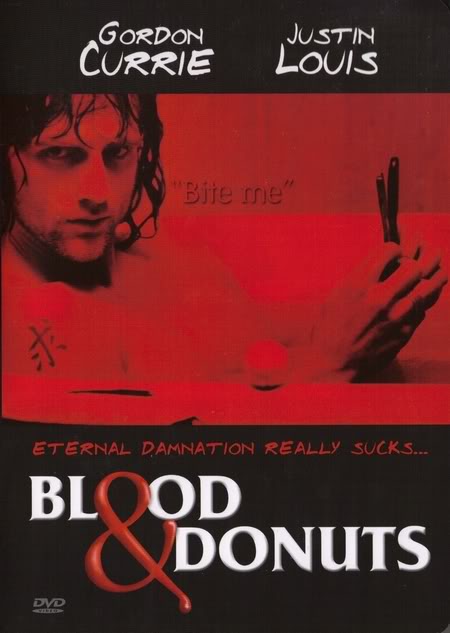
Sadly it seems that nowadays many people can’t help but sneer a little at the thought of watching Hammer Horror, Toho Godzilla films or anything that wasn’t made by James Cameron or Michael Bay. At the opposite end of the spectrum there are those that sit and smirk at everyone else, whilst claiming there is no such thing as cinema outside of the masterpieces of Michael Haneke, Kurosawa et al.
What confuses me still more is that we seem perfectly content to watch the same kind of material on TV. We watch hours of detective shows, crime dramas etc, many of which are feature length and produced with no greater budget nor skills than the films we have been content to ignore. Is it simply the element of laziness? Is it just because we can sit down on the sofa, sip our mug of coffee and let it all wash over us? The answer, sadly, is probably yes.
Blood and Donuts

For a first real Women in Horror Recognition Month post, I chose to watch Holly Dale’s Blood and Donuts. I’ll be honest; I only chose the film because it has a female director and female-directed feature-length horror is all too rare. I must admit that, going on only the title, I really wasn’t expecting much.
How wrong could I be?
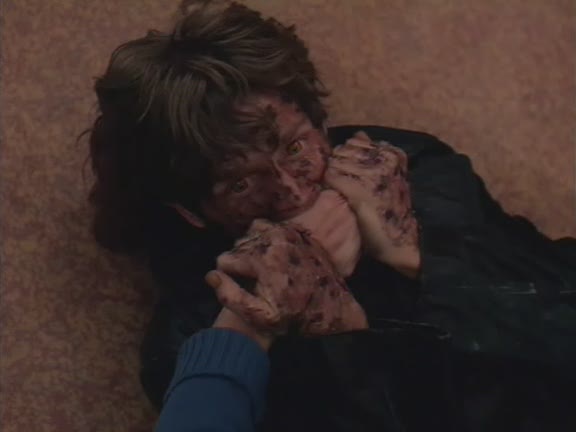
Though I won’t pretend that this is absolutely essential viewing, this is a clever, fun, sensitive vampire film; sharing much more with thoughtful films like Interview With The Vampire and Let the Right One In than with Hammer’s neck-biting romps. At the heart of this film we have the indefinitely old vampire, Boya - a “humanist vampire” as we discover. Much like Brad Pitt/Louis in Interview With The Vampire, this leaves Goya to lead a less than glamorous life, munching on rats and pidgeons as privately as he can and trying not to court too much attention.
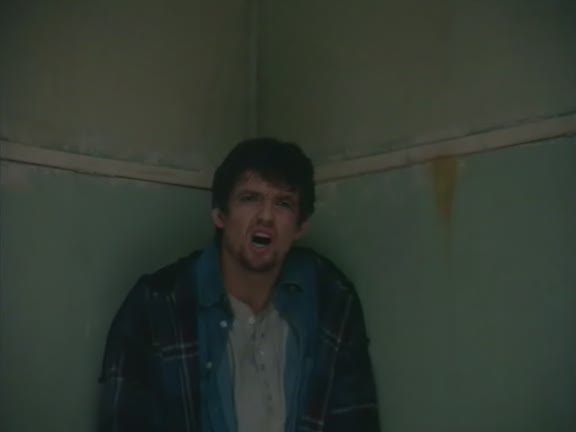
If we’re completely honest, the plot doesn’t exactly go anywhere and there’re a handful of unsatisfyingly loose ends (bad scripting or unfortunate editing, who knows?) but the bulk of this film is about the relationships between Goya, Molly the waitress at the coffee and donut shop and Earl, a cab-driver leaned on by some shady gangster types. Though, as I said, the story doesn’t really take these characters very far, the actors are surprisingly good for such an obviously low-budget affair. Gordon Currie, as Goya, is superb and creates a suffering vampire who we really do care for, whislt Helene Clarkson and Justin Louis are also both convincing in their roles - although perhaps a little too quick to accept Goya as a vampire.
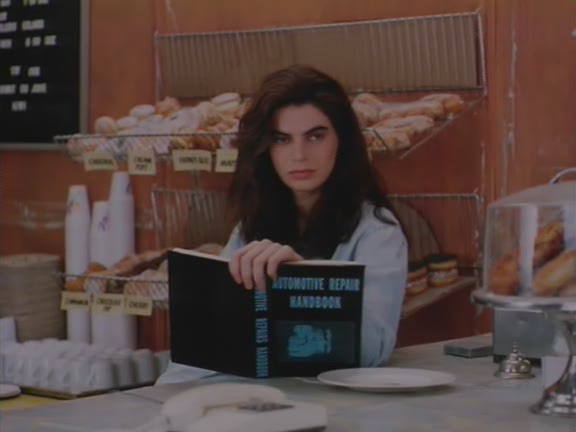
It’s by no means flawless - a handfull of (really) dodgy special effects are decidedly disappointing, the title is excruciatingly awful (I know that’s not a major point, but still….) and, after creating such an interesting vampire, it’s a shame we learn so little about Goya’s life (or rather, existence. Life’s probably the wrong word). For all that, it is a well-paced, interesting vampire flick which manages to both follow a good deal of vampiric folklore (excepty stakes to the heart apparently) and bring something fresh to what can, at times, be a fairly tired, predictable and plodding genre.
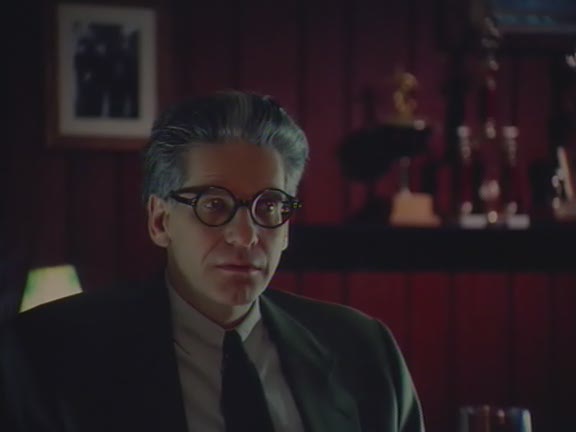
As if to further reward you, David Cronenburg’s extended cameo does add some more fun to the bill; he and his mobster subordinates are mostly an excuse for some vampire action - the characters are never really fleshed out at all - and both help to create some tension in the film but also to undermine the plot somewhat. Their inclusion is never really explained satisfactorily - it is as if someone forgot to include a little chunk of plot that might have bound it all together a lot more tightly.
Minor gripes aside, this is definitely a film worth watching and came as a wonderful surprise.
The Killer Shrews

If I asked you to think of a fictional movie-title that would be undoubtedly awful, entirely silly and should probably never be made, do you think you could come up with better than The Killer Shrews?
Sometimes I really do wonder how on earth these things get pitched before creation. THis is low budget, but no so low that it didn’t have some funding. The conversation must have gone something along the lines of:
Mr Money: So, what is this film you were asking for funding for?
Jay Simms (screenplay): Ah, well. It’s going to be an exploration of the dangers of science. We’re talking themes of genetic mutation, we’re talking science going bad, human achievement getting so far ahead of itself that it puts humanity in danger. We want people to think about science, about whether it’s a good thing, about where the limits of ‘playing God’ lie.


Mr Money: (yawning) yeah, yeah. Ok, same old, same old. Isn’t that what every science fiction book and film has tried to do? So what makes you the new HG Wells? What’s the actual premise?
JS: Well, let me buy another round first. Whiskey as well? Yep? Good.
[goes to bar]
JS: Where were we?
Mr Money: You’re explaining the premise of your story? Where’s it set?
JS: Well, we’re opting for an island. You know, our heroes are trapped on an island with these beasts. We’re going to set it up so that they can’t leave: I’m thinking hurricane or tropical storm, that conveniently imprisons these people on the island at exactly the worst moment, when these monsters are at their most dangerous.
Mr Money: You mean like full moon or something? Are we talking werewolf?
JS: Erm.. not exactly. No. We’re talking animals that have been made larger and more vicious through scientific experiments. They’ve escaped from the lab and are roaming the island. So our heroes arrive just as they’re running out of food and turning on their creators. More drinks?
Barman! Two pints, two whiskies … make them doubles!

Mr Money: Go on…
JS: Well we’ll obviously go for the trapped-survivor tensions. We’ve got it mapped out perfectly, pair of scientists - one completely work-obsessed - pretty blonde girl with nasty coward boyfriend and one handsome rogueish seaman. Oh and we’ll throw in a black guy and a Mexican as well
Mr Money: They’re the expendable characters?
JS: Oh yes, we’ll kill them off with little or no time wasted on characters or emotions.
Mr Money: Well, I must say, that all sounds rather good. What did you say the monsters were again? Was it savage dogs? Spiders?
JS: Not exactly…

Mr Money: Well come on, tell me, I want to know…
JS: Ah… shrews.
[Long silence]
Mr Money: Shrews?
JS: Shrews. Savage, dog sized shrews with massive pointy teeth.
Mr Money: Shrews? I think I’m going to need another drink before I sign that cheque….
And, after that next drink he signed over his cash and so The Killer Shrews was made. Replete with dogs-in-furry-costumes playing the shrews, this is one of the most ridiculous films I’ve seen. It’s not even that bad: well paced and you’re guarranteed to be laughing throughout…
